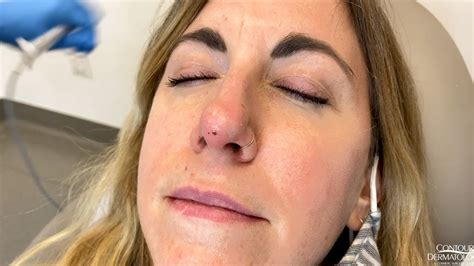How to Remove a Fibrous Papule: Safe and Effective Methods
Fibrous papules are small, firm bumps that commonly appear on the face, particularly around the eyes and cheeks. While generally harmless, their texture and appearance can be bothersome for many. This article explores safe and effective methods for removing fibrous papules, emphasizing the importance of consulting a dermatologist for proper diagnosis and treatment. Remember, I am an AI and cannot provide medical advice. The information below is for educational purposes only. Always consult a qualified healthcare professional before attempting any treatment.
What are Fibrous Papules?
Fibrous papules are benign skin growths resulting from the thickening of collagen fibers in the dermis. They are typically flesh-colored or slightly yellow, small (1-3 mm in diameter), and dome-shaped. While often asymptomatic, some individuals may experience mild irritation or itching. They're most common in adults, particularly those with fair skin. Their exact cause isn't fully understood, but factors like sun exposure and genetics may play a role.
Can I Remove Fibrous Papules at Home?
Many people wonder if they can remove fibrous papules at home. The short answer is generally no. While some home remedies claim to help, attempting to remove them yourself can lead to scarring, infection, or further skin irritation. Fibrous papules are firmly embedded in the skin, and improper removal techniques can cause significant damage.
What are the Safe and Effective Methods for Removal?
The most effective and safe methods for removing fibrous papules involve professional medical intervention. Here are some options your dermatologist might suggest:
1. Cryotherapy:
This involves freezing the papule with liquid nitrogen. Cryotherapy is a relatively quick and minimally invasive procedure, often effective in eliminating smaller fibrous papules. However, multiple sessions might be necessary.
2. Surgical Excision:
For larger or more stubborn fibrous papules, surgical excision may be recommended. This involves surgically removing the papule with a scalpel. While effective, it's a more invasive procedure and may leave a small scar.
3. Electrocautery:
This procedure uses an electric current to destroy the papule's tissue. It's often used for smaller lesions and can effectively remove the papule with minimal scarring.
4. Laser Treatment:
Certain lasers can effectively target and remove fibrous papules. This is a relatively precise method that can minimize scarring. However, it may be more costly than other options.
How Much Does Fibrous Papule Removal Cost?
The cost of fibrous papule removal varies significantly depending on the chosen method, the number of papules needing treatment, the dermatologist's fees, and your location. It's best to consult with your dermatologist to get a personalized cost estimate.
What are the Potential Risks and Side Effects?
While generally safe, all medical procedures carry some risk. Potential side effects of fibrous papule removal may include:
- Scarring: While many methods minimize scarring, some procedures may leave a small, noticeable mark.
- Infection: There’s a small risk of infection at the treatment site.
- Pigmentation changes: The treated area may temporarily experience changes in pigmentation.
- Recurrence: In rare cases, the fibrous papules may recur.
Will My Insurance Cover Fibrous Papule Removal?
Insurance coverage for fibrous papule removal varies widely depending on your insurance plan, the reason for removal (cosmetic vs. medical necessity), and the chosen method. It's important to contact your insurance provider directly to determine your coverage.
How Long Does It Take to Recover?
Recovery time depends on the chosen removal method. Cryotherapy often requires minimal downtime, while surgical excision may require a longer healing period. Your dermatologist will provide specific instructions based on your treatment.
What Should I Do if I Have Concerns About a Skin Growth?
If you have any concerns about a skin growth, including fibrous papules, it's crucial to consult a dermatologist or qualified healthcare professional for proper diagnosis and treatment. They can accurately identify the growth and recommend the most suitable and safest removal method. Do not attempt self-treatment. Early diagnosis and appropriate treatment are key to preventing potential complications.

